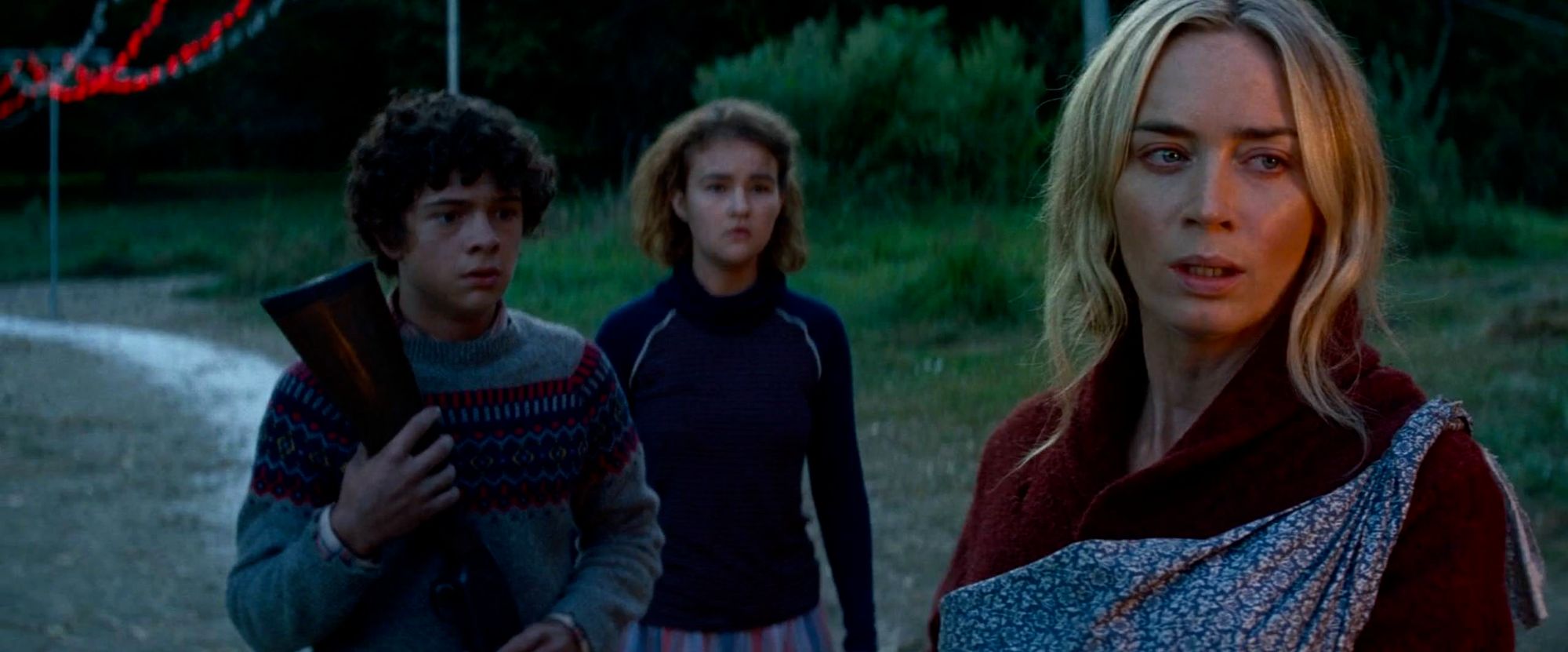A Quiet Place Part II (2020): Horror Sequel Gone Wrong
John Krasinski's follow-up to his “stay quiet or be eaten” hit of 2018 makes me question whether the original was actually good.

The first A Quiet Place film, in 2018, felt like a fresh premise, generating natural suspense with its “be quiet or be eaten by weird monsters that come charging out of the woods” scenario.
The sequel shows that sometimes such premises, as good as they are first time out, are best left as single-serving stories. In A Quiet Place Part II what felt original before feels like an inconvenient and annoying conceit, expanding a story beyond what feels like its natural fit.
Part of the attraction and novelty of the first film was the more visual form of storytelling it employed as a result of the characters not being able to freely talk. While the sequel technically also employs a more visual form of storytelling, it seems more constrained by this than fuelled by it. It might be more visual but does not visually excel.
The photography is mediocre, and the acting, as far as communicating emotion without the aid of dialogue, is very basic. There is nothing nuanced going on — no surprising or complex levels of nonverbal communication. Everything is just dialled up to 11 and over-acted to get the point across, like a mime.
The film feels like a generic horror/action film with its dialogue removed. Instead of reviving the old magic of silent cinema, we get a bog-standard, low budget Hollywood action film, with noticeably mediocre CGI monsters, and not much dialogue. I started to wonder if what inspired the story concept was to get around the need for writing good dialogue — something that never occurred to me watching the original.
Not to hark on the dialogue issue, though it does completely dominate the film, but… when there is dialogue, it often takes place in large indoor areas and sealed spaces where it feels like characters should be able to speak at a reasonable volume to one another. Yet they don't, making it hard at times to follow the few conversations that occur. This fast annoys, though the problem is lessened after the first half-hour when the plot devolves into an extended game of monster hide-and-seek that has minimal storytelling needs.
The soundtrack is also more noticeable than usual due to the lack of dialogue, drawing attention to the fact that it is not very good. It is melodramatic and cheesy, and over-plays every note — eager to whelm up and accompany every shot it can with pseudo-melancholy notes that sound taken from a cinematic stock library tagged under “big sad moment.” As such, the soundtrack manages to compound the number of ways this film disappoints.
It's a shame, because I really enjoyed the original. Or at least, I'm pretty sure I did. The more I think about the flaws of this film, the more I question whether the first film was actually ever any good. I'm going with “yes” — the original was good, and it just suffers from the effect of a bad sequel leaving a sour last impression. I'll need to rewatch the original to confirm this for sure.
Finally there is the ending, and the dramatic resolution or satisfaction it provides. On this subject, I’ll just say this.
James Lanternman writes movie reviews, essays, and moonlit thoughts. You can reach him at [email protected].
Previously… Preying on Fear
